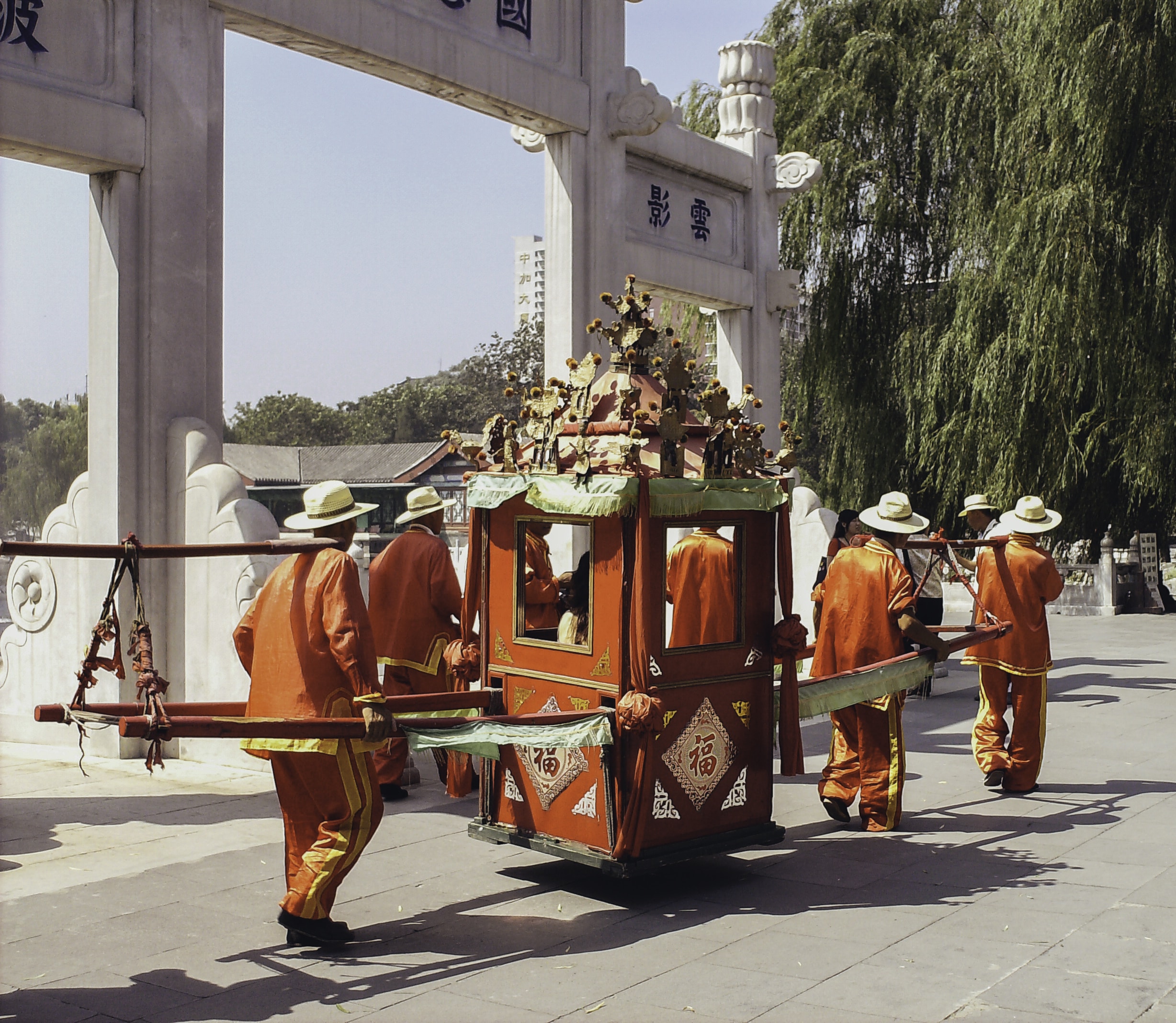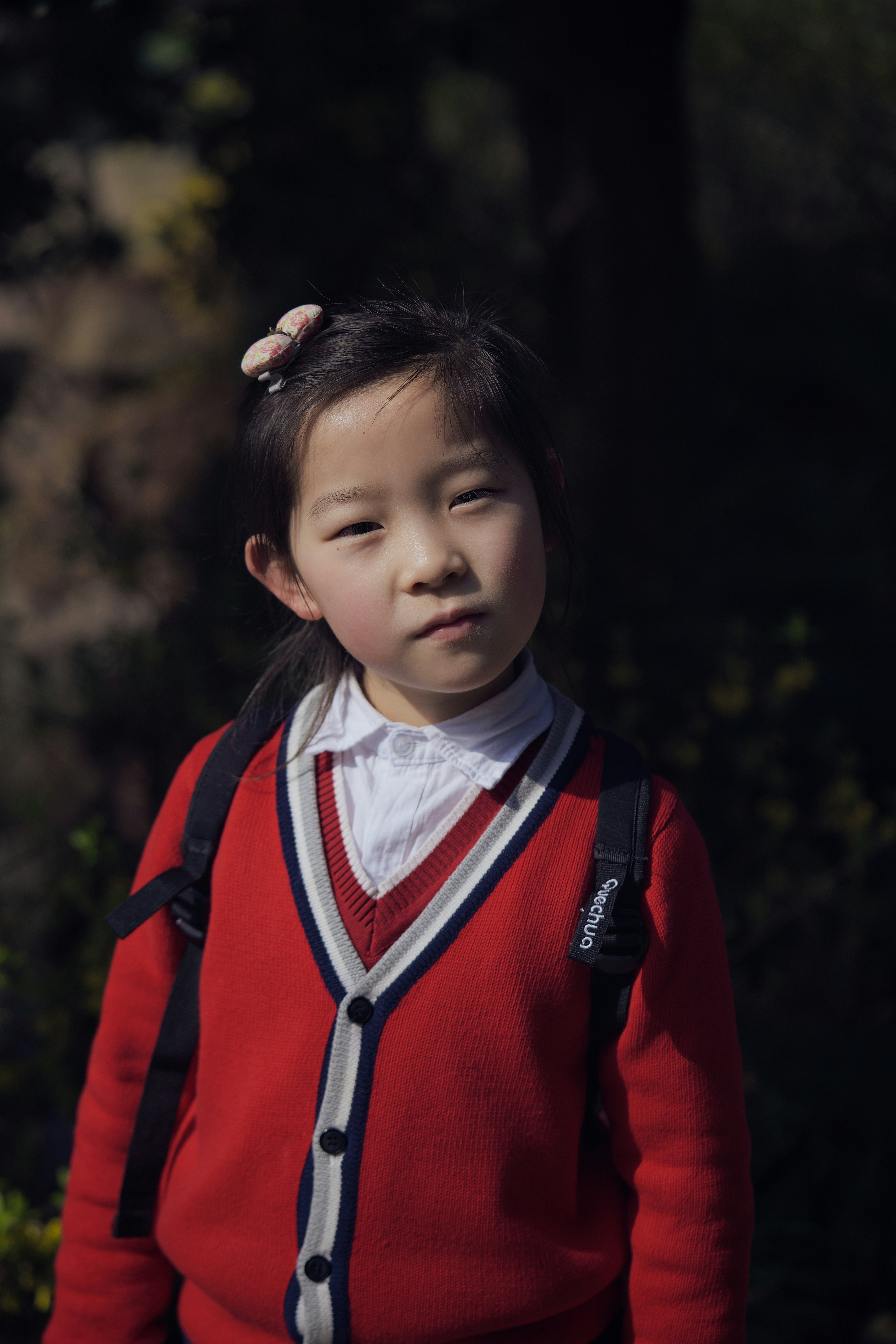Immerse yourself in the enchanting tales of Chinese folklore as you discover the magical world that captivates children’s imaginations. This article explores the rich tradition of Chinese folklore in children’s literature, introducing you to a treasure trove of captivating stories that have been passed down through generations. From mythical creatures and legendary heroes to moral lessons and ancient customs, these timeless tales transport young readers to a world filled with wonder and adventure. Join us on a journey through the vibrant tapestry of Chinese folklore, where dragons soar through the sky, wise old sages offer guidance, and the power of compassion and courage triumphs.
This image is property of images.unsplash.com.
Overview of Chinese Folklore
Chinese folklore is a treasure trove of enchanting tales and mythical creatures that have captivated audiences for centuries. Rooted in ancient traditions and beliefs, Chinese folklore provides a glimpse into the rich history and culture of China. Passed down through generations, these folklore stories have been embraced as an integral part of Chinese society.
The rich history of Chinese folklore
Chinese folklore dates back thousands of years and is deeply rooted in the country’s history and traditions. These stories have been passed down orally, from one generation to another, and have played a significant role in shaping Chinese culture. From legends of gods and goddesses to heroic tales of warriors and mischievous adventures, Chinese folklore reflects the diverse beliefs and ideals that have shaped the Chinese people.
The role of folklore in Chinese culture
Folklore holds a special place in Chinese culture, as it serves as a means of preserving history, customs, and values. These stories often contain moral lessons, teaching virtues such as filial piety, honesty, and respect for nature. Chinese folklore also serves as a medium for cultural expression, allowing individuals to connect with their heritage and pass on important traditions to future generations.
Why Chinese folklore is enchanting for children
Chinese folklore has a universal appeal, making it particularly enchanting for children. The imaginative tales and colorful characters spark their curiosity and transport them to a magical world. These stories not only entertain, but they also teach valuable life lessons, encouraging children to be brave, kind, and compassionate. By introducing children to Chinese folklore, we open up a window to a different culture, fostering a sense of diversity and appreciation for other traditions.
Popular Characters in Chinese Folklore
Chinese folklore is teeming with iconic characters that have become legendary figures, each with their own unique stories and traits. These characters have captivated audiences young and old, becoming beloved symbols of Chinese folklore.
The Monkey King: A mischievous yet lovable character
One of the most iconic characters in Chinese folklore is the Monkey King, also known as Sun Wukong. With his mischievous personality and incredible powers, the Monkey King has charmed generations of readers. His adventures, depicted in the classic tale “Journey to the West,” showcase his wit, bravery, and ultimately his journey towards enlightenment.
Journey to the West: A classic tale of bravery
“Journey to the West” is a classic Chinese novel that follows the adventures of the Monkey King and his companions on a quest to retrieve sacred Buddhist scriptures. This epic tale showcases themes of bravery, friendship, and perseverance in the face of adversity. The characters in this beloved story, such as the Monkey King, Tripitaka, Pigsy, and Sandy, have become legendary figures in Chinese folklore.
The Dragon: A symbol of power and wisdom
In Chinese folklore, the dragon represents power, wisdom, and good fortune. With its majestic appearance and ability to control the forces of nature, the dragon has inspired countless myths, legends, and artistic representations. Chinese culture values the dragon as a sacred creature, and it is often associated with the emperor and the imperial family.
The Phoenix: A legendary bird of beauty and grace
The phoenix is another mythical creature that holds great significance in Chinese folklore. Often associated with femininity, the phoenix represents beauty, grace, and resurrection. Its vibrant plumage and melodious song have made it a popular motif in Chinese art, literature, and celebrations. The phoenix is also believed to bring good luck and prosperity.

This image is property of images.unsplash.com.
The Legend of the Zodiac Animals
The Chinese zodiac, also known as Shengxiao, is a system that categorizes individuals into twelve animal signs based on the year they were born. This ancient tradition is deeply rooted in Chinese folklore and has been used for centuries to determine one’s personality traits and fortune.
The origin of the Chinese zodiac
According to Chinese folklore, the Jade Emperor, ruler of the heavens, decided to create a zodiac to help track time and honor the animals that arrived at his party. The twelve animals that crossed the heavenly river became the zodiac signs in the order they arrived – Rat, Ox, Tiger, Rabbit, Dragon, Snake, Horse, Goat (or Sheep), Monkey, Rooster, Dog, and Pig.
The twelve animals and their characteristics
Each of the twelve animals in the Chinese zodiac possesses unique characteristics that reflect their respective year. These characteristics are believed to influence an individual’s personality and destiny. For example, people born in the Year of the Rat are known for their intelligence and resourcefulness, while those born in the Year of the Dragon are believed to be confident and charismatic.
How the zodiac is used in Chinese culture
The Chinese zodiac plays a significant role in Chinese culture. It is used to determine compatibility in relationships, predict fortunes, and guide important decisions such as marriage and business partnerships. The Year of the Animal is celebrated with great enthusiasm, with festivities, decorations, and traditions associated with each zodiac sign.
Magical Creatures in Chinese Folklore
Chinese folklore is home to a fascinating array of mythical creatures, each with its own significance and symbolism. These creatures have played pivotal roles in folktales, legends, and religious beliefs, adding a touch of magic and wonder to Chinese culture.
The Qilin: A mythical creature of good fortune
The Qilin is a mythical creature in Chinese folklore often depicted as a hybrid of a lion and a dragon. It is believed to bring good fortune, prosperity, and longevity. The Qilin is often portrayed as a gentle and benevolent creature, embodying noble virtues. It is often associated with important events, such as the birth of a great ruler or the opening of a prosperous business.
The Nian: A fearsome beast with a vulnerable spot
The Nian is a fearsome creature that appears in Chinese folklore, known for terrorizing villages and wreaking havoc. However, the Nian has a weakness – it is terrified of loud noises and the color red. Chinese New Year celebrations include firecrackers and red decorations to scare away the Nian, symbolizing the triumph of good over evil.
The Pixiu: A legendary creature with a voracious appetite
The Pixiu is a legendary creature in Chinese folklore known for its insatiable appetite for wealth and prosperity. This creature is often depicted with the body of a lion, wings, and a fierce-looking face. It is believed that having a Pixiu figurine or charm can attract wealth and protect against misfortune. The Pixiu is regarded as a symbol of good fortune and financial abundance.
The JiaoTou: A flying, fire-breathing tortoise
The JiaoTou, also known as the Flying Tortoise, is a mythical creature that combines the attributes of a tortoise and a dragon. It is often depicted as a wise and powerful creature capable of flying and breathing fire. In Chinese folklore, the JiaoTou is associated with longevity, wisdom, and protection against evil spirits. Its image is commonly seen in temples and other places of worship.
This image is property of images.unsplash.com.
Famous Folklore Stories for Children
Chinese folklore offers a plethora of captivating stories that have been adapted for children, introducing them to the magical world of Chinese mythology and legends. These stories not only entertain but also impart important values and lessons.
The Legend of Mulan: A story of bravery and identity
“The Legend of Mulan” is a popular Chinese folktale that tells the story of a young woman who disguises herself as a man to take her father’s place in the military. Mulan’s bravery, determination, and loyalty have made her a beloved figure in Chinese folklore. This inspiring tale teaches children about courage, gender equality, and the importance of staying true to oneself.
The Butterfly Lovers: A tragic love story
“The Butterfly Lovers” is a classic Chinese folktale that tells the story of two star-crossed lovers, Liang Shanbo and Zhu Yingtai. Forbidden by their families to be together, they are separated by fate and reunited in death, transforming into a pair of butterflies. This bittersweet love story touches upon themes of sacrifice, devotion, and the enduring power of love.
The Legend of Nezha: A tale of a heroic child warrior
The Legend of Nezha” is an action-packed folktale that centers around Nezha, a powerful child warrior with incredible abilities. Nezha’s courage, loyalty, and determination to protect his loved ones make him an inspiring character for children. This tale teaches valuable lessons about selflessness, standing up against injustice, and the power of perseverance.
The Cowherd and the Weaver Girl: A romantic fable
“The Cowherd and the Weaver Girl,” also known as the “The Tangle of Vega and Altair,” is a popular Chinese legend about two star-crossed lovers. Zhinü, a heavenly weaver girl, falls in love with Niulang, a poor cowherd. However, their love is forbidden, and they are separated by the Silver River, only allowed to meet once a year on the seventh day of the seventh lunar month. This heartfelt fable teaches children about the power of love, perseverance, and the importance of cherishing special moments.
Teaching Values through Chinese Folklore
Chinese folklore serves as a powerful tool for teaching values and imparting life lessons to children. These stories are filled with moral teachings that encourage positive character development and help shape a child’s understanding of the world. Some of the key values emphasized in Chinese folklore include:
Valuing family and filial piety
Chinese folklore often emphasizes the importance of family and the concept of filial piety – respect and care for one’s parents and ancestors. Characters like Mulan and Nezha demonstrate unwavering loyalty and devotion to their families, teaching children the value of family bonds and the importance of honoring one’s roots.
Courage and perseverance in the face of adversity
Many Chinese folklore stories feature characters who demonstrate great courage and perseverance in the face of adversity. From Mulan’s daring acts on the battlefield to Nezha’s relentless pursuit of justice, these tales inspire children to be brave, resilient, and determined to overcome challenges.
The importance of honesty and integrity
Chinese folklore often highlights the virtues of honesty and integrity. Characters like the Monkey King learn important lessons about the consequences of dishonesty, while figures like the Cowherd and the Weaver Girl champion the power of trust and truth. These stories instill in children the importance of honesty, trustworthiness, and doing the right thing.
Respecting nature and all living creatures
Chinese folklore celebrates the beauty of nature and emphasizes the importance of respecting the environment and all living creatures. Folktales featuring mythical creatures like the Qilin and the Phoenix highlight the interconnectedness of nature and humanity, teaching children to appreciate and protect the natural world.

Adapting Chinese Folklore for Young Readers
As Chinese folklore is filled with complex stories and cultural nuances, adapting them for young readers is essential to make the stories accessible and engaging. Here are some strategies used to bring Chinese folklore to life for young audiences:
Simplifying complex stories for children
To make Chinese folklore accessible to young readers, complex stories are often simplified while retaining the key elements and message. This includes focusing on the main characters and their adventures, omitting intricate details, and using age-appropriate language.
Incorporating vibrant illustrations to enhance the reading experience
Visual elements play a crucial role in capturing the attention of young readers. Illustrations are used to depict the characters, settings, and magical elements in Chinese folklore, enhancing the reading experience and helping children immerse themselves in the story.
Making folklore relatable to a modern audience
Adapting Chinese folklore for young readers often involves making the stories relatable to a modern audience. This may include incorporating contemporary themes, dialogue, or cultural references that resonate with young readers.
Adding interactive elements to engage young readers
To make Chinese folklore interactive and engaging, adaptations may include interactive elements such as puzzles, trivia, and activities related to the stories. This not only enhances the reading experience but also encourages children to actively participate and explore the world of Chinese folklore.
Exploring Chinese Festivals and Traditions
Chinese folklore is deeply intertwined with the vibrant festivals and traditions celebrated throughout the year. Here are some of the most notable festivals that showcase Chinese folklore:
The Spring Festival: A time for family and celebration
The Spring Festival, also known as Chinese New Year, is the most important and widely celebrated festival in Chinese culture. This festival marks the beginning of the lunar calendar year and is a time for family reunions, feasting, and honoring ancestors. Chinese folklore plays a significant role during this festival, with traditions, decorations, and performances rooted in myth and legend.
The Lantern Festival: Illuminating the darkness with light
The Lantern Festival marks the end of the Chinese New Year celebrations. It is a colorful and joyous event where lanterns of various shapes and sizes are lit and displayed, symbolizing the triumph of light over darkness. The festival also features dragon dances, lion dances, and various folk performances that bring Chinese folklore to life.
The Dragon Boat Festival: Racing to commemorate a hero
The Dragon Boat Festival, also known as Duanwu Festival, commemorates the poet Qu Yuan, a beloved figure in Chinese folklore. This festival is marked by dragon boat races, where teams compete in long, narrow boats adorned with dragon heads and tails. The festival also includes the consumption of traditional sticky rice dumplings called zongzi, which are associated with Qu Yuan’s sacrifice.
The Mid-Autumn Festival: Mooncakes and family reunions
The Mid-Autumn Festival is a celebration of family, unity, and the harvest moon. It is a time for families to gather, enjoy mooncakes, and appreciate the beauty of the full moon. Chinese folklore plays a role in this festival through legends such as Chang’e, the moon goddess, and the Jade Rabbit, who reside on the moon.
The Influence of Chinese Folklore in Other Cultures
Chinese folklore has left an indelible mark on various forms of media and art across the globe. Its captivating characters, enchanting stories, and symbolic creatures have influenced and inspired creators from different cultures.
Chinese folklore in Hollywood movies
Chinese folklore has gained popularity in Hollywood movies, with films such as “Crouching Tiger, Hidden Dragon” and “Mulan” showcasing iconic Chinese legends. These movies introduce Chinese folklore to a global audience, increasing awareness and appreciation for Chinese culture.
The impact of Chinese folklore on Western literature
Chinese folklore has also influenced Western literature, with writers incorporating elements of Chinese mythology and legends into their works. Stories like “The Journey to the West” and “The Butterfly Lovers” have inspired adaptations and retellings in Western literature, bringing Chinese folklore to a wider readership.
Chinese folklore in popular children’s television shows
Chinese folklore has found a place in popular children’s television shows, introducing young viewers to the rich world of Chinese mythology and legends. Television series such as “Legend of the Dragon” and “The Monkey King: Quest for the Sutra” bring these captivating stories to life through animation and storytelling.
The global popularity of Chinese mythical creatures
Chinese mythical creatures such as the dragon, phoenix, and Qilin have transcended borders and gained recognition worldwide. These creatures have become popular motifs in various forms of art, jewelry, and tattoos, connecting people from different cultures to the enchanting world of Chinese folklore.
Resources for Exploring Chinese Folklore
For those interested in exploring the captivating world of Chinese folklore, numerous resources are available to delve into these enchanting tales:
Children’s books featuring Chinese folklore
A wide range of children’s books featuring Chinese folklore are available, showcasing vibrant illustrations and simplified adaptations of classic tales. Titles such as “The Monkey King’s Journey to the West,” “The Legend of Mulan,” and “The Story of the Chinese Zodiac” introduce young readers to beloved characters and timeless stories.
Online platforms for accessing Chinese folktales
Numerous online platforms provide access to a wealth of Chinese folktales, making it easy to immerse oneself in the rich tapestry of Chinese culture. Websites such as China Highlights and ThoughtCo.com offer a diverse collection of folktales and legends that can be enjoyed and shared with children.
Museum exhibits and cultural centers focused on Chinese folklore
Museum exhibits and cultural centers around the world offer opportunities to explore Chinese folklore through immersive displays and interactive experiences. These institutions often provide educational resources and workshops that delve deeper into the rich history and significance of Chinese folklore.
Educational workshops and events for learning about Chinese folklore
Organizations and community centers often host workshops and events that focus on Chinese folklore, providing hands-on learning experiences for children and adults alike. These workshops may include storytelling sessions, art activities, and performances that bring Chinese folklore to life.
With its captivating tales, iconic characters, and enduring values, Chinese folklore continues to captivate and inspire audiences young and old. Exploring the magical world of Chinese mythology and legends not only broadens our understanding of different cultures but also fosters a sense of wonder and appreciation for the rich heritage of Chinese folklore.



